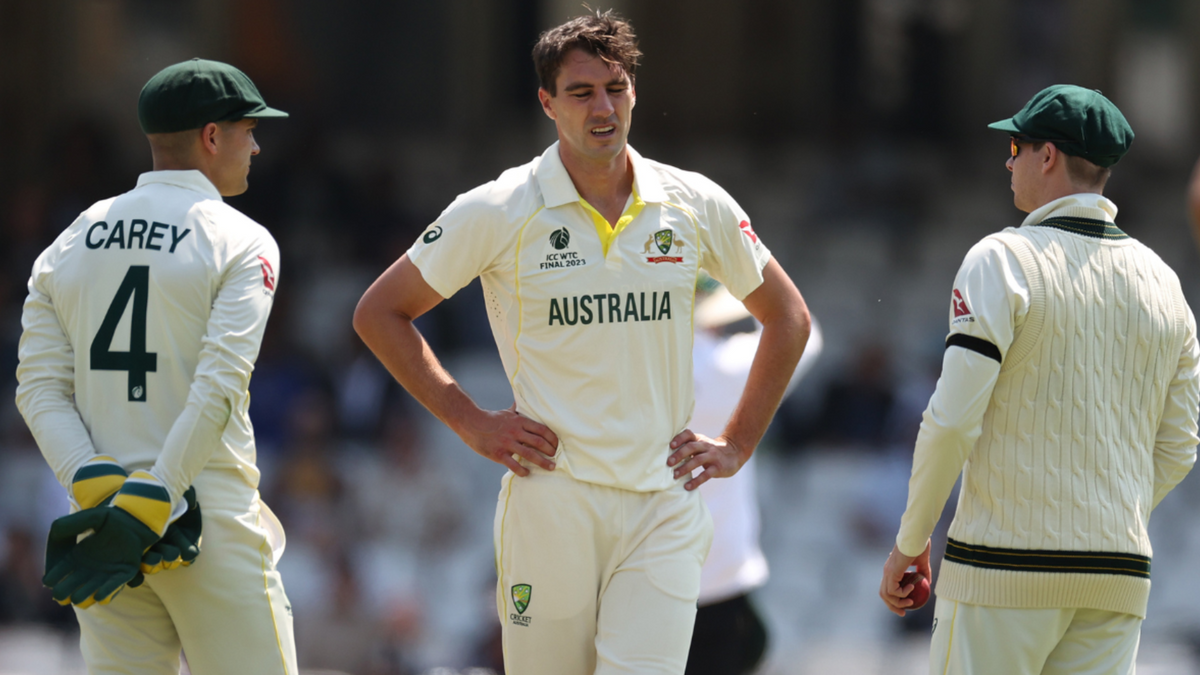
At the end of day two, things were looking ominous. Not just for India, but for England too.
To bet on the World Test Championship final with our Match Centre partners bet365, head here.

Travis Head had finally got a hundred outside of Australia, and shown his attack-first approach could succeed in England. Steve Smith looked like the Ashes torturer of old, grinding India into the dust. Then the five frontliners got to work. Captain got captain. Star newbie got star newbie (with a ball that was the definition of ‘unplayable’). Cam Green got Cheteshwar Pujara with one almost as good. Virat Kohli was bounced out, before having his technique and his eating habits torn apart. Nathan Lyon turned one to show that he wasn’t to be forgotten, and to drive another stake into Ashwin-admiring Indian fans, still stinging from the previous day’s toss.
Within two balls of day three, India had slid further, Pat Cummins finding that seam inwards again. Shardul Thakur copped blow after blow, with the physio visiting him repeatedly. The quintet looked unrelenting, the task of keeping them out consistently impossible, let alone scoring any runs.
Ajinkya Rahane, meanwhile, recalled for his first Test in a year and a half and for what may still be his last Test ever, was becalmed. His last score of note in the IPL, when a flurry of flashbangs won him a recall, was a 29-ball 71. Here, he was 29 off 71 overnight. A total reversal.
And then, in two blows, things changed. Rahane edge-glided for four through third, and then hooked Cummins majestically for six. Suddenly, he had fifty. For the rest of the session he was on another plane, regal no-follow-through drives, Lyon punched for three fours in two overs.
Thakur looked more mortal, his back leg doing a jig whenever he was beaten, which was often. But he also thrashed effectively when he could, with each blow harder to take because Australia knew they *should* be good enough to stop this.
Just for a stretch, their minds began to frazzle and fray. Three catches went down. Cummins thought he had broken through but overstepped, perhaps a sign of overstraining, though he had also done so on the previous day when Australia were on top. A frivolous review, which no one seemed to want, came and went. Cummins ended the session by kicking the ball in Steve Smith’s direction.
Ultimately, in this game, two lost hours won’t mean much, because of how good Australia were in the first 12. It didn’t take long after Lunch for a Green blinder to remove Rahane, prince for a session only. Thakur continued to thrash, but Australia still wrapped India up for under 300. They are so far ahead that surely they can’t lose this one.
[breakout id=”0″][/breakout]
Still, England will have watched it and taken some heart, because this isn’t the first time Australia have become loose at the edges when someone has given it back. Look to the first Test in India, when the pre-series optimism had begun to ebb and Cummins bowled the loosest spell of his career. Or go to Sydney and then the Gabba, when Ashwin and Vihari blocked before Rishabh and the rest pulled off a win for the ages, Australia unable to drive home the advantage against a team only just able to field 11. Further back there’s Headingley and the missed run out and the bad reviews, and other examples if you care to look.
This might seem unfair, since you’ll be able to find examples of any team losing a close game – that’s why we consider them close. But increasingly Australia don’t win thrillers. Not since 2016 have they won a Test by fewer than 100 runs or with fewer than six wickets in hand. They either batter teams or fall short. As a result, they have won one series away from home in seven years, and lost three at home in that time.
England, meanwhile, have been testing themselves in tense games, and are experts at reapplying the pressure. They know how to take a bad over and turn it into a bad day, stick their fingers into a small weakness and rip it until it gapes.
Australia will arrive, almost certainly, as World Test Champions, with arguably the best side they have had since 2005, and as most bookies’ favourites. But England may well have spotted a familiar failing, and one they know they can exploit.








